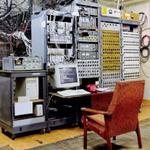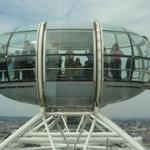 Ludovico schrieb am 06.05.2021:[06.05.2021]
Ludovico schrieb am 06.05.2021:[06.05.2021]
In Bezug auf die schweren Brustverletzungen von Dubinina und Zolotaryov nun einige Einschätzungen von Medizinern, Forensikern, etc….
1. Befragung Dr. Vozrozhdenny (Autopsie Dubinina, Zolotaryov / 1959)
…Question: How is it possible to explain the cause of the damage to Dubinina and Zolotaryov? Is it possible to combine them into one cause?
Answer: I think the character of the injuries on Dubinina and Zolotaryov – a multiple fracture of the ribs – on Dubinina were bilateral and symmetrical, and on Zolotaryov were one-sided. Both had hemorrhaging into the cardiac muscle with hemorrhaging into the pleural cavity, which is evidence of them being alive [when injured] and is the result of the action of a large force, similar to the example used for Thibeaux-Brignolle. These injuries, especially appearing in such a way without any damage to the soft tissue of the chest, are very similar to the type of trauma that results from the shock wave of a bomb.
…..
Case files 381-383 (dyatlovpass.com)
2. Lev Ivanov (Untersuchungsleiter von 1959 / 1990)
… The sensation came later when in the Sverdlovsk morgue, we performed an autopsy of these corpses. Dubinina, Thibeaux-Brignolle and Zolotaryov had extensive, completely incompatible with life physical injuries. For Lyuda Dubinina, for example, 2, 3, 4, 5 ribs were broken on the right and 2, 3, 4, 5, 6, 7 on the left. And all this without visible external injuries. Such damage usually happens when a person is struck with a large force, for example, by car at high speed.
Mystery of the fireballs (dyatlovpass.com)
3. Dr. Sergey Nikitin (forensic expert 201?)
GS: You found that not all ribs are broken equally. Is it possible to say that the force that acted on the thorax in full force acted where the ribs are completely broken? And where they didn't brake completely, it seems like the impact was less?
SN: The ribs on the axillary line have broken as a result of excessive bending. This is called the flexural nature of the fractures. In the parasternal line, the character of the fractures was extensor. This suggests that the traumatic event occurred at the time when the person was lying on his back, and suggests the direction where the mass came from.
GS: Like as if squeezed a concrete slab? Or is it from the compression of a blow? There is a theory that a lot of snow has fallen.
SN: Was it impact or slow squeezing that took some time? When the corpse is examined not to the extent of decomposition in which the corpse of Zolotaryov was at the time of the autopsy, there are soft tissues, subcutaneous fatty tissue, one can estimate the hemorrhage into the subcutaneous fatty tissue. If it was a blow, we would see hemorrhages in the muscles and subcutaneous fatty tissue. If this mass of the snow layer type squeezed gradually, it is unlikely that we would see hemorrhaging.
GS: Hemorrhages were noted at the autopsy. And on histology, and in the act.
SN: This suggests that it was a sudden pressure, a velocity impact. Not gradual.
Cor: It's like a blow, lets say, by a car?
SN: A car is a comparison. In our case, we can say that this was the impact of a large mass.
GS: Could it be caused by explosive blast?
SN: It can be safely excluded. Injuries would be of a different nature.
Exhumation of Zolotaryov - 2 (dyatlovpass.com)
Ich muss hoffentlich nicht anmerken, dass die kinetische Energie eines Körpers, der einen steileren, eingeschneiten Abhang wenige Meter hinunterkugelt nicht ausreicht, um diese Verletzungen hervorzurufen. Es liegt dort (siehe high slope) auch kein Areal mit relevanter senkrechter Fallhöhe vor, die vonnöten wäre, um ein symmetrisches Eindrücken eines Brustkorbs (Dubinina) zu erreichen. Wer das nicht versteht, sollte noch einmal grundlegende Einheiten zur Impulserhaltung nachholen. Das buzzword „Biomechanik“ (ganz ähnlich zum buzzword „Entropie“) erklärt für sich genommen mal überhaupt nichts.
4. Es wurde vor einigen Monaten ein neues Buch von der Herausgeberin von Dyatlov.com publiziert – eines von vielen Büchern, das vom hiesigen - räusper! – Ober-Archivar im Forum nicht gelesen wurde. Die Autoren (und das ist kompatibel mit medizinischen Interpretationen) gehen davon aus, dass ein umgestürzter Baum die schweren Brustverletzungen verursacht hat. Obwohl ich die These nicht unterstütze, muss ich den Autoren zugutehalten, dass sie einige ähnlich gelagerte, gut dokumentierte Fallbeispiele auflisten, die artverwandte Verletzungen durch umgefallene Bäume beinhalten. Die Forderung, auf ähnlich gelagerte Sturzverletzungen zu verweisen, wird in diesem Forum ja zuweilen als Häresie abgetan.
5. Pathologe Dr. Michael Kormev ( 40 Jahre Erfahrung im Bereich Forensik - siehe Lobatechev/Bosworth, Dyatlov Pass keeps its secret, 2013)
Bezüglich Verletzungen von Slobodin, Thibault, Dubinia and Zolotarev :
….typical for a blunt force trauma with compression against an unyielding object; and it points to the avalanche as a possible cause….
6. Pathologe aus Russland (zitiert von Koshkin auf online-Forum, siehe Lobatechev/Bosworth)
Bezüglich Dubinina:
….most likely, the trauma was incurred as a result of a hit while her rib cage was `fixed against an unyielding object (while she lay on the back). The pathlogist could not completely exclude the possibility of a blow to her back, while she was resting with her chest on the ledge.
Bezüglich Zolotarev:
…most probable mechanism …. compression.
Generell:
…the severe injuries described above resulted from an impact of siginficant force comparable to a hit by car moving with speed above 60 kilometers per hour…
7 Dr. Yuri Savkin (medical doctor of 30 years of experience, siehe Lobatechev/Bosworth)
Bezüglich Zolotarev: …compression against unyielding surface…
8. Forumsteilnehmer chelsi, als Notärztin im Schockraum arbeitend, samt Kollegen:
-> keine Übereinstimmung mit trivialen Sturzverletzungen im Gelände
9. Der russische Untersuchungsbericht vom letzten Jahr, der zum Ausdruck brachte, dass die nämlichen Brustverletzungen spezifisch und mit Lawinen und nicht mit Stürzen in Verbindung zu bringen sind.
10. Dr. Eduard Tumanov (forensic expert)
Er geht davon aus, dass die Gruppe in eine gewalttätige Auseinandersetzung verstrickt war und unterstreicht, dass es keine entsprechenden Geländeformationen dort gibt, die derartige Verletzungen in die Wege hätten leiten können.
Fazit: Die Ursache der Brustverletzungen ist unklar. Es ist höchst manipulativ, zeigt von Unkenntnis und ist wissenschaftlich unredlich, den Eindruck zu erwecken, dass die besprochenen Brustverletzungen ohne weiteres durch Stürze im Gelände hervorgerufen hätten werden können.
Objektiv betrachtet spräche natürlich gar nichts dagegen, ein weiteres medizinisches Forum zu diesem Thema zu befragen. Im Übrigen trifft das auch auf die multiplen Nervenzusammenbrüche (akute Belastungsreaktion) zu, die angeblich zur gleichen Zeit und ganz dämonisch alle übermannte, und sie in ihr Vergehen trieb. Auch hierfür gibt es ja keine dokumentierten Fälle in der Weltgeschichte, die ähnlich gestrickt wären.
Quelle: Case files 381-383 (dyatlovpass.com)
Mystery of the fireballs (dyatlovpass.com)
Exhumation of Zolotaryov - 2 (dyatlovpass.com)
Lobatechev/Bosworth, Dyatlov Pass keeps its secret, 2013
Ausreichend Salz in die Wunden derer, die forensische Existenz vernachlässigen, vermeiden, verdrängen… Du könntest die Liste noch beträchtlich erweitern, wenn du hinzunimmst, was auf
https://forum.dyatlovpass.com/index.php dazu gepostet wird. Wer sich mit dem Djatlow-Fall beschäftigt hat, weiß, welche wesentliche Rolle die forensische Evidenz einmal in Gegnerschaft zu Lawinentheorien und zum andern pro Mord-Theorien gespielt hat.
Nebenbei geht aus deinem Posting hervor, daß du Pawlow/Hadjiyska, „1079: The Overwhelming Force of Dyatlov Pass“, gelesen hast. Du bist der erste! Auch wenn die deutsche Übersetzung noch in Arbeit ist, ich hätte gedacht, ein paar wären es doch, die sich dafür interessieren. Falls du hier noch gelegentlich mitliest, mich würde interessieren, wie du die Geologen-Sache einschätzt, also ob deren angenommene Verwicklung in den Djatlow-Fall stichhaltig sein könnte. Die von Pawlow/Hadjiyska konstruierte Fabel mag im Gesamten Blödsinn sein, aber immerhin weisen sie nach, daß Geologen in der Nähe des Djatlow-Passes in dem betreffenden Zeitraum etwas zu schaffen hatten.
Emmerich schrieb:Die leicht violette Verfärbung der Kleidungsstücke der Djatlowiten, und zwar aller Kleidungsstücke, da denkt man doch, wie soll das je enträtselt werden?





